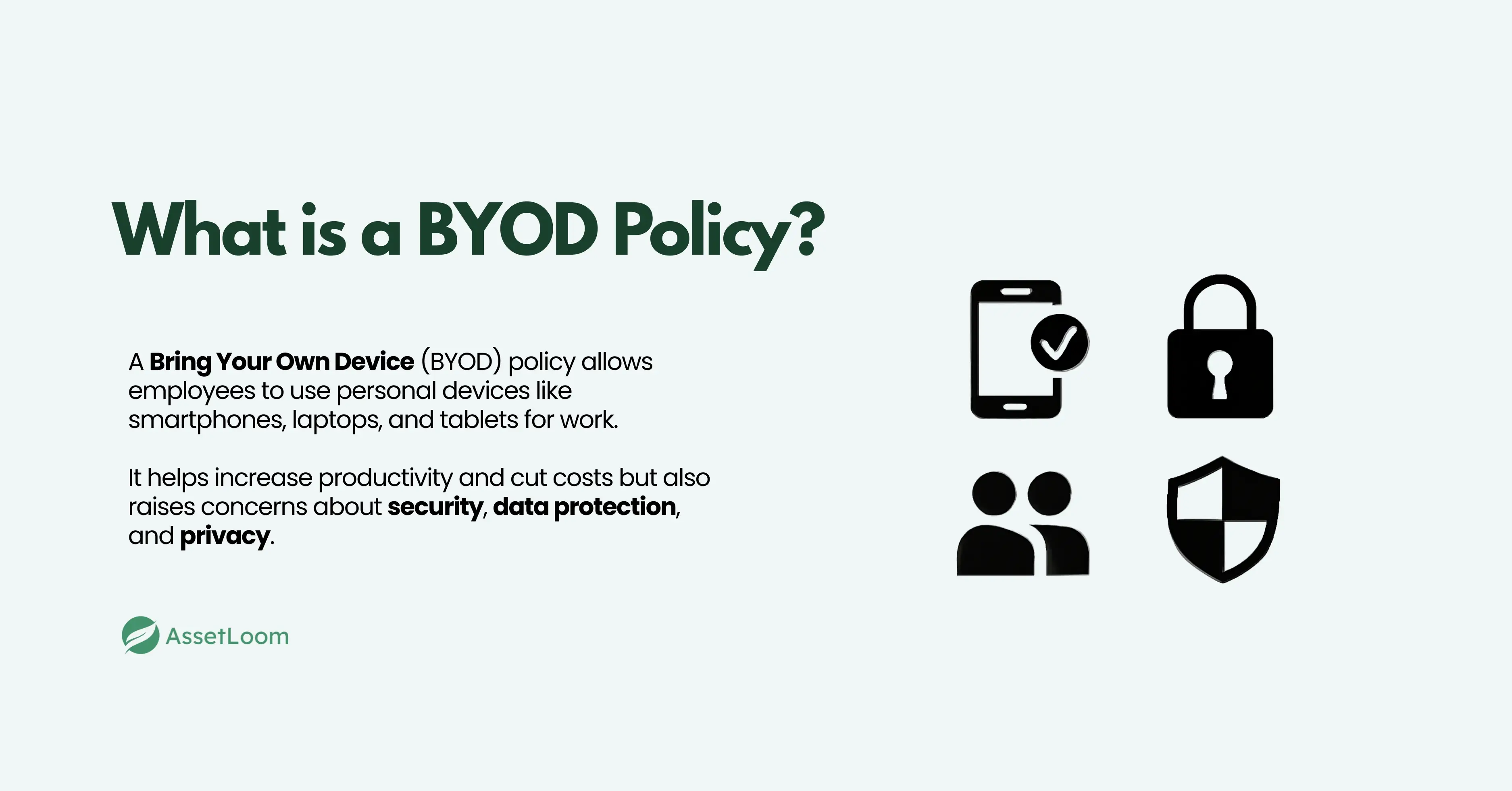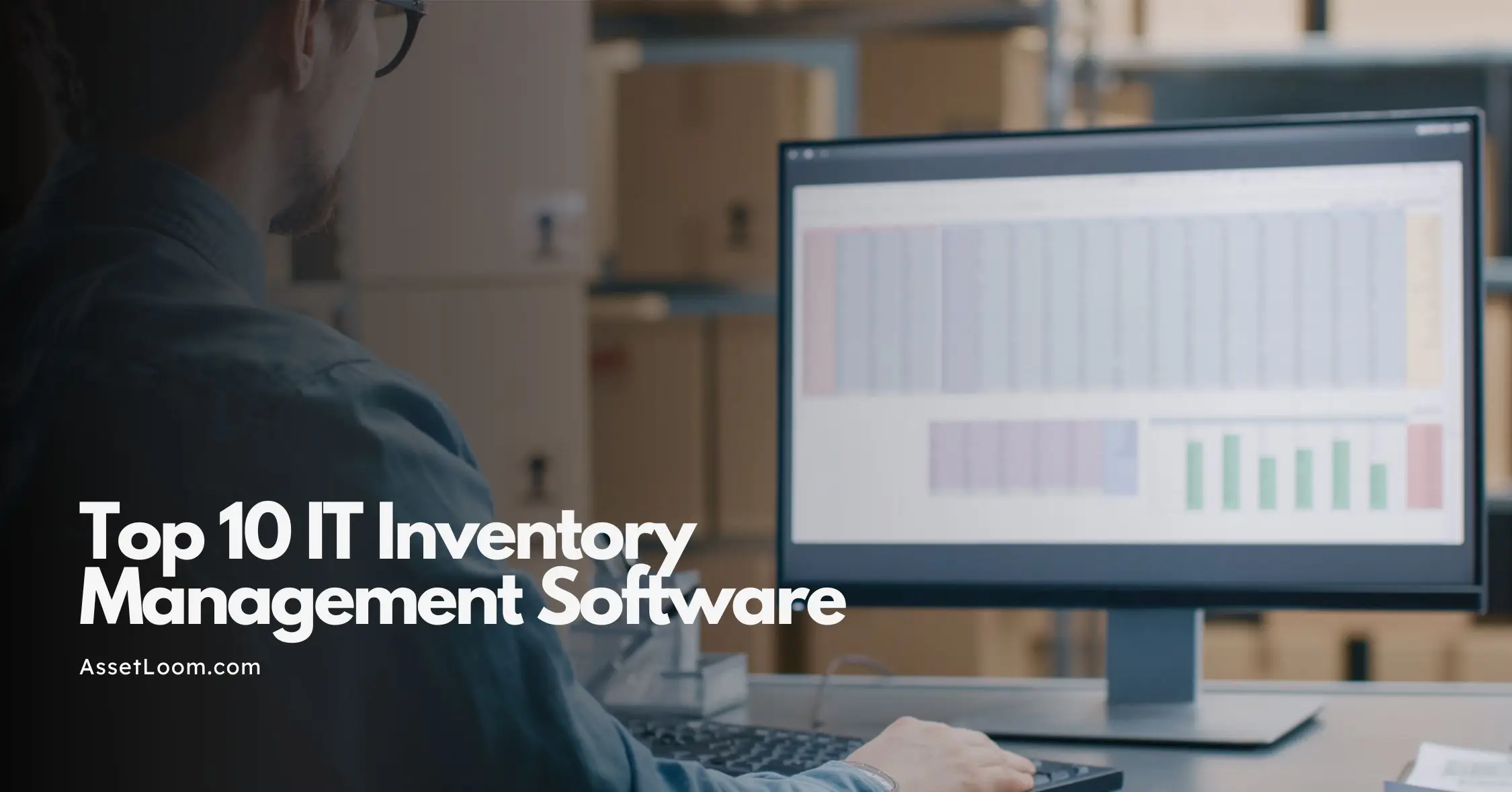Bring Your Own Device (BYOD) Policy Best Practices [FREE TEMPLATE]
Best practices for implementing a Bring Your Own Device (BYOD) policy and download a FREE BYOD Policy Template to ensure security and productivity in your workplace. Use Case
Bring Your Own Device (BYOD) is becoming common in workplaces today. It lets employees use their own smartphones, laptops, and tablets for work. This approach offers many benefits — better productivity, lower costs, and happier employees. People work more efficiently when using devices they already know.
But BYOD also comes with risks. Security, privacy, and data protection can become serious concerns. Without clear rules, companies face threats like cyberattacks and data leaks. That’s why every organization needs a clear BYOD policy. It should balance flexibility with strong security and privacy controls.
In this blog, we’ll share practical tips for creating and implementing a successful BYOD policy.
Understanding BYOD Policy
A Bring Your Own Device (BYOD) policy explains the rules for using personal devices at work. It covers items like smartphones, laptops, and tablets used for work tasks. The goal is to set clear expectations for both employees and employers, keeping company data safe while maintaining productivity.
To make a BYOD policy effective, it must be clear and easy to understand. It should explain what the policy covers, what types of devices are allowed, and how they can be used. This helps avoid confusion and keeps everyone on the same page.

Here are the essential components of a well-structured BYOD policy:
1. Scope of the Policy
This section explains who can join the BYOD program and which devices are allowed.
- It lists approved device types, such as smartphones, tablets, or laptops.
- It also identifies which employees or departments can use personal devices for work.
- The policy may include restrictions, like limiting BYOD use to certain roles or business units.
This helps keep the program organized and ensures only secure, compatible devices are used.
2. Device Protocols
To keep company data safe, all personal devices must meet basic security standards.
- Devices should have the latest software updates, antivirus protection, and security patches.
- The company may require Mobile Device Management (MDM) software to protect and monitor work data.
- Some actions may be restricted, such as syncing work files to other personal devices or visiting unsafe websites.
These rules help ensure every connected device stays secure and compliant.
3. Authorized Use of Devices
The policy should explain when and how employees can use their personal devices for work.
- It may limit work activities to business hours or approved locations, such as the office or remote setups.
- Acceptable use includes tasks like checking work emails, joining meetings, or using company apps.
- Personal use should be limited, and activities that disrupt work — like gaming or streaming — should be avoided.
Clear usage rules help employees stay productive while keeping company data secure.
4. Employee and Employer Privacy Rights
When employees use personal devices for work, privacy and security must stay balanced.
- Company data still belongs to the organization, even if it’s stored on a personal device.
- The policy should clearly state how much access or monitoring the company can do.
- It must also explain what happens if a device is lost, stolen, or when an employee leaves — such as wiping company data or removing system access.
These rules protect both employee privacy and company information.
5. Safe and Secure Usage of Mobile Devices
Employees should learn how to use their personal devices safely.
- Avoid using mobile devices while driving or operating equipment.
- Always use strong passwords and keep them private.
- Turn on multi-factor authentication (MFA) to add extra protection.
These simple habits help prevent unauthorized access and keep company data secure.
6. Protocols for Lost or Stolen Devices
Devices can be lost or stolen, so the policy must include clear steps to follow.
- Employees should report the incident to IT immediately.
- The company should be able to remotely wipe work data from the device to protect sensitive information.
- Employees must know what to do if their device is compromised, such as changing passwords and notifying their manager.
Quick action helps reduce the risk of data loss or security breaches.
7. Removal from the BYOD Policy
When an employee leaves the company, the policy should explain the exit process clearly.
- All company data must be deleted from the employee’s personal devices.
- Access to company systems, apps, and networks should be removed right away.
- IT may verify that all work-related information is safely wiped.
These steps prevent data leaks and keep the company’s systems secure after an employee’s departure.
Read also: Software License Management Solutions for BYOD Environments
Security Measures and Considerations
Using personal devices for work can increase security risks. To protect both company and personal data, your BYOD policy should include clear security rules and best practices.
Below are the key measures to include:
1. Password Protection and Authentication
Strong passwords are the first defense against unauthorized access.
- Require employees to use complex passwords for devices and work apps.
- Mandate Multi-factor authentication (MFA) whenever possible.
- MFA adds extra security by verifying identity with a second step, such as a text code or fingerprint scan.
2. Mobile Device Management (MDM) Software
MDM tools help companies manage and secure personal devices remotely.
- Enforce security policies like device encryption and automatic updates.
- Allow IT teams to remotely wipe data from lost or stolen devices.
- Monitor device security status to detect risks early.
3. Data Encryption
Encryption keeps company data safe if a device is lost or stolen.
- All work files should be encrypted by default.
- Encrypted data stays unreadable without the proper access key.
4. Regular Software Updates
Outdated software creates weak points for hackers.
- Require employees to install OS and app updates regularly.
- Include easy steps in your policy for checking and applying updates.
5. Secure Network Access
Public Wi-Fi is risky for work data.
- Employees should only use secure networks for work activities.
- Require the use of a VPN when connecting remotely.
- A VPN encrypts the data between the user’s device and company systems.
6. Restricting Access to Sensitive Data
Not all company data should be accessed from personal devices.
- Define which data types are allowed on personal devices.
- Restrict access to highly sensitive data, like customer or financial information.
- Ban syncing work files to personal cloud services (Google Drive, Dropbox, etc.).
7. Remote Wipe and Device Locking
Protect company data even when devices go missing.
- Enable remote wipe to erase work data from lost or stolen devices.
- Set devices to auto-lock after a short period of inactivity.
8. Employee Education and Awareness
Security is everyone’s responsibility.
- Educate staff about safe practices, like avoiding suspicious emails and downloads.
- Remind them to update software and report strange activity quickly.
- Clear communication reduces mistakes and strengthens protection.
9. Incident Response Plan
Even with strong security, breaches can still happen.
- Include a clear plan for reporting lost devices or data breaches.
- Explain who to contact and what steps to take immediately.
- Provide guidance on how to limit the impact of any security incident.
Privacy and Data Ownership
Using personal devices for work can blur the line between personal and company data. This can raise questions about privacy and ownership. A good BYOD policy should clearly explain the rights and responsibilities of both the employer and employees.
1. Employee Privacy Rights
Employees need to know how much privacy they have when using their personal devices for work.
- The policy should explain what information the company can access and how much monitoring is allowed.
- Employers may view work-related data, but they must not access personal content like photos, texts, or personal apps.
- Monitoring should be transparent, limited, and respectful of employee privacy.
2. Company Data Ownership
Company data remains the property of the organization — even when stored on an employee’s device.
- This includes emails, files, and customer information.
- The policy must state that the company can access, manage, or delete its data when needed.
- This applies if a device is lost, stolen, or when an employee leaves the company.
3. Separation of Personal and Work Data
To protect both company and personal data, employees should keep them separate.
- Use different apps or folders for work files and personal content.
- This helps prevent accidental sharing or exposure of sensitive information.
- Separation also makes it easier to remove company data if the device is lost or when an employee leaves.
4. Data Access and Security on Personal Devices
Only authorized users should have access to company data.
- Access should depend on job role and the need to know.
- Use strong security measures, including:
- Password protection
- Encrypted communication
- Device management tools
- These controls prevent unauthorized users from viewing or copying company information.
5. Protection of Sensitive Personal Data
While the focus is on company security, employee privacy also matters.
- The company should avoid accessing personal or sensitive information, such as health or financial records.
- The policy must explain how mixed data (work and personal) is handled, especially during remote wipes or offboarding.
6. Policy Enforcement and Consequences
Employees are responsible for keeping both personal and company data safe.
- The policy should explain the consequences of breaking BYOD rules.
- This may include losing access to company systems or facing disciplinary action.
- The company reserves the right to remove its data if policies are not followed or if the employee leaves.
7. Data Removal Upon Termination or Departure
When an employee leaves, company data must be removed from their device.
- The policy should describe the process for deleting work data and revoking access to systems.
- If needed, the company should be able to remotely wipe its data.
- This ensures no sensitive information stays on personal devices after employment ends.
Creating a BYOD Agreement
A Bring Your Own Device (BYOD) agreement is an essential part of any BYOD policy. It acts as a formal document that explains the terms and conditions for using personal devices at work.
This agreement helps both the company and employees understand their responsibilities, expectations, and security rules.
Why You Need a BYOD Agreement
- Sets clear boundaries between personal and work use.
- Defines how company data should be handled on personal devices.
- Reduces risks like data leaks, security issues, and misunderstandings.
- Helps employees know exactly what is expected of them.
Free BYOD Agreement Template
To make things easier, we’ve created a comprehensive BYOD Agreement Template. You can use it as a base to build your own policy and tailor it to your company’s needs.
The template covers:
- Device eligibility and approval process.
- Security requirements and data protection.
- Employee and employer responsibilities.
- Data ownership and removal procedures.
**Download BYOD Agreement Template** to start building a secure and effective BYOD policy for your organization.
This agreement includes all essential sections to data ownership and employee responsibilities. Customize it to suit your specific needs and ensure your business is fully protected.
Read also: IT Asset Lifecycle Management Policy Template [Free Download]
Pros and Cons of BYOD
Pros of BYOD
- Cost Savings: Companies save money on purchasing and maintaining devices since employees use their own.
- Increased Productivity: Employees are more efficient with devices they’re familiar with, leading to faster work completion.
- Better Employee Morale: Allowing employees to choose their devices boosts job satisfaction and retention.
- Access to Current Technology: Employees keep their devices up-to-date, providing the latest tech without company investment.
- Flexibility and Mobility: BYOD enables employees to work from anywhere, promoting a better work-life balance.
Cons of BYOD
- Security Risks: Personal devices are harder to secure, increasing the risk of data breaches.
- Increased IT Complexity: IT teams must manage various devices and ensure they meet security standards.
- Privacy Concerns: Balancing company and personal data raises privacy issues for both employees and employers.
- Data Leakage: Shared use of devices can lead to inadvertent data exposure if not properly managed.
- Device Management Challenges: Companies lose control over the hardware, which can cause compatibility and security issues.
Read also: What is Hardware Asset Management?
Best Practices for Implementing BYOD
To make your Bring Your Own Device (BYOD) policy successful, it’s important to follow best practices that ensure security, productivity, and compliance.
Implement Strong Security Measures
Protecting company data on personal devices is critical.
- Require strong passwords and multi-factor authentication (MFA) for all devices.
- Use Mobile Device Management (MDM) software to monitor and enforce security policies.
- Enable remote wipe and auto-lock features for lost or stolen devices.
- Encrypt sensitive company data to keep it safe, even if a device is compromised.
- Ensure employees install regular software and security updates.
- Require the use of a Virtual Private Network (VPN) when accessing company systems on public Wi-Fi.
- Restrict risky apps and websites that could expose company data.
These steps make BYOD both secure and flexible, allowing employees to work safely without putting company information at risk.
Set Data Privacy Standards
Clear data privacy rules protect both the company and employees.
- Define what counts as company data and how it should be stored and shared.
- Remind employees that company data remains the property of the organization.
- Restrict syncing sensitive data with personal apps or cloud storage.
- Outline procedures for lost or stolen devices, including how company data will be remotely wiped.
- Explain how employee privacy is protected through encryption and secure access controls.
A well-defined privacy policy builds trust and prevents data misuse.
Create a Clear Protocol for Lost or Stolen Devices
When a device is lost or stolen, quick action protects company data.
- Employees should report the loss immediately to the IT or security team.
- The company should be able to remotely lock or wipe work data to prevent unauthorized access.
- Employees must use passwords, encryption, and screen locks to reduce risks.
- The protocol should outline employee steps for recovery and the company’s role in securing data.
A clear response plan minimizes damage and keeps sensitive information safe.
Educate Employees
Training is key to a successful BYOD program.
- Teach employees about cybersecurity best practices, such as spotting phishing emails and avoiding unsafe apps.
- Remind them to use strong passwords, enable MFA, and update devices regularly.
- Provide short, ongoing training sessions to keep awareness high.
- Make sure employees understand:
- How to handle company data.
- What to do if a device is lost or stolen.
- The company’s expectations for responsible device use.
Informed employees are your first line of defense against security threats.
Conclusion
A Bring Your Own Device (BYOD) policy can bring major advantages — from saving costs to boosting productivity and employee satisfaction.
However, success depends on how well you manage security, privacy, and clear communication.
By setting strong security rules, training employees, and protecting company data, you can enjoy the benefits of BYOD without the risks.
With the right approach, your organization can build a secure, flexible, and efficient BYOD environment that supports both your business goals and your team’s needs.

Related Blogs
Subscribe for Expert Tips and Updates
Receive the latest news from AssetLoom, right in your inbox.


